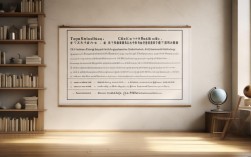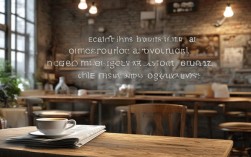雅思口语中,谈论“old object”是一个常见且能展现个人经历与情感的话题,这类题目不仅考察考生的语言表达能力,更注重描述细节、情感连接与文化内涵的挖掘,以下将从话题解析、结构框架、高分技巧及实例示范等方面,为考生提供全面指导。

话题解析:为何“old object”重要?
在雅思口语Part 1、Part 2甚至Part 3中,“old object”都可能以不同形式出现,Describe an old object you have”“Tell me about something old in your family”等,考官通过此话题评估考生是否能:
- 具体描述:清晰呈现物品的外观、材质、年代等细节;
- 逻辑组织:按时间线或功能顺序展开叙述;
- 情感表达:自然融入个人经历与情感连接;
- 文化拓展:若涉及家庭传承物品,可延伸至文化价值观(如节俭、亲情)。
结构框架:如何高效组织内容?
无论是描述个人物品还是家庭旧物,建议采用“总-分-总”结构,确保逻辑清晰、内容充实,以下为通用框架:
开篇引入:点明物品基本信息
- 物品名称(如:a pocket watch, a traditional vase);
- 来源(家庭传承、自己购买、他人赠送);
- 简要评价(如:“It’s more than just an object to me”)。
主体展开:多维度描述
- 外观细节:材质(wood, silver, ceramic)、颜色、磨损痕迹、特殊设计(雕刻、花纹);
- 历史背景:年代(grandmother’s era, childhood gift)、获取故事(如何得到、当时的场景);
- 功能与意义:原始用途(如计时、装饰)、现在的情感价值(回忆载体、精神象征)。
结尾升华:总结感受与影响
- 物品对个人或家庭的意义;
- 是否会传承下去及原因。
高分技巧:让描述更生动
运用感官细节
避免笼统描述,通过视觉、触觉、听觉等细节增强画面感。
- ❌ “It’s an old clock.”
- ✅ “It’s a brass pocket watch with a slightly tarnished surface, and when I wind it up, I can hear the subtle ticking sound that reminds me of my grandfather’s calm presence.”
加入情感连接
将物品与个人经历结合,体现“object + memory”的深层关联。
“This teapot was given to my mom by her aunt before she left her hometown. Every time she uses it to brew jasmine tea, she tells me stories about her childhood, so it’s like a bridge connecting the past and present.”
使用多样词汇与句式
- 词汇替换:避免重复“old”,可用vintage, antique, heirloom, worn-out等;
- 句式变化:穿插复合句(定语从句、状语从句)、非谓语动词(分词短语、不定式)及倒装句。
文化拓展(适用于Part 3)
若物品涉及文化传统,可延伸讨论其社会意义。
“In Chinese families, heirlooms like jade pendants are often passed down because they symbolize continuity and good fortune. It’s not just about the object, but the values it represents.”
实例示范:描述“family heirloom”
以下以“a silver necklace”为例,展示完整回答:
“The old object I want to talk about is a silver necklace that has been in my family for three generations. It’s a delicate piece with a small pendant shaped like a crescent moon, slightly darkened with age but still shining softly.
My great-grandmother received this necklace as her wedding gift in the 1920s. Back then, silver was a precious metal, and wearing it symbolized purity and prosperity. She passed it to my grandmother, who then gave it to my mother on her 18th birthday, with the tradition that it would be mine when I come of age. I remember touching it as a child—its cool surface and the tiny engraving on the pendant, which looks like my great-grandmother’s initials.
To me, this necklace is more than jewelry. It’s a tangible link to the women in my family. When I wear it, I feel connected to their strength and stories. I plan to keep it and pass it to my daughter someday, because it carries not just beauty, but the legacy of love and resilience.”
常见旧物分类与词汇拓展
| 类别 | 示例 | 相关词汇 |
|---|---|---|
| 家族传承 | 祖母的戒指(grandmother’s ring)、古董花瓶(antique vase) | heirloom, vintage, passed down, generational |
| 个人回忆物品 | 童年玩具(childhood toy)、旧日记本(old diary) | nostalgia, worn-out, sentimental, memory lane |
| 实用旧物 | 机械手表(mechanical watch)、皮质笔记本(leather notebook) | functional, durable, classic, craftsmanship |
FAQs
Q1: 描述旧物时,如果记不清具体细节怎么办?
A1: 可以合理补充细节,用“I think”“I believe”等表达推测,同时侧重情感与意义而非精确事实。“I’m not sure exactly when my dad bought this guitar, but he told me it was in the 1980s when he was a college student. What matters is that he used it to write songs for my mom.”
Q2: 如何避免内容重复,让描述更丰富?
A2: 从不同角度切入:物品的“过去-对比(如“Originally it was used for…, but now I keep it as…”)、物品与人的“互动故事”(如“Once I dropped it and…, which made me realize…”)、物品引发的“联想”(如“Looking at it, I often think about…”),通过多维度展开,自然丰富内容层次。
通过以上方法,考生不仅能清晰、生动地描述“old object”,还能展现语言能力与情感深度,在雅思口语中脱颖而出,关键在于结合个人真实经历,用细节打动考官,让物品成为故事的载体。











